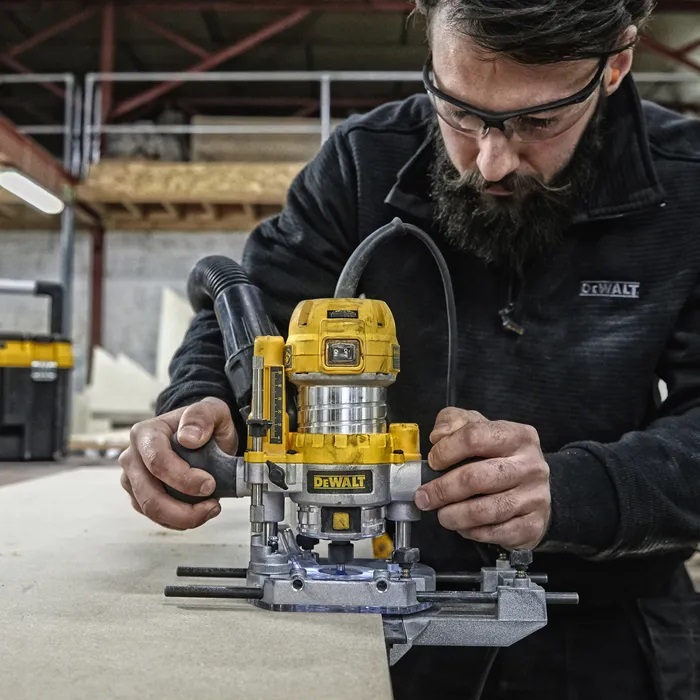Routers Go Left: A Simple Rule for Safe and Accurate Routing

For many woodworkers, especially those new to using routers, determining the correct direction to move the tool can be confusing. With various applications and setups, it’s easy to get turned around. However, there’s a straightforward principle that can guide you: “Routers go left.”
Understanding the Principle
When viewed from above, a standard router bit spins clockwise. As the spinning bit engages the wood, it exerts a force that causes the router to naturally want to move to the left. This reaction is consistent regardless of the type of bit or the specific routing task.
By moving the router in a direction that allows it to push against the wood, you gain better control and achieve cleaner cuts. This typically means moving the router from left to right when working along the outside edge of a piece, allowing the bit to cut into the wood rather than climb over it.
Practical Applications
- Edge Routing: When shaping the outside edge of a board, move the router from left to right. This direction ensures the bit cuts into the wood, providing a smoother finish and reducing the chance of the router climbing or jerking.
- Inside Cuts: For routing inside edges, such as cutouts or inlays, move the router clockwise around the perimeter. This approach maintains the “routers go left” principle within the context of the internal edge.
- Using Fences and Guides: When employing a fence or guide, position it so that the router’s natural leftward force presses it against the guide. This setup enhances stability and precision during the cut.
Benefits of Following the Rule
- Improved Control: Moving the router in the correct direction allows you to work with the tool’s natural tendencies, resulting in smoother operation.
- Cleaner Cuts: Proper feed direction minimizes tear-out and ensures a more refined finish on your workpiece.
- Enhanced Safety: Controlling the router’s movement reduces the risk of kickback or unintended tool movement.
While routers are versatile tools capable of a wide range of tasks, remembering the simple rule that “routers go left” can greatly enhance your woodworking experience. By aligning your movements with the router’s natural tendencies, you achieve better results with increased safety and efficiency.
Comments
Add comment